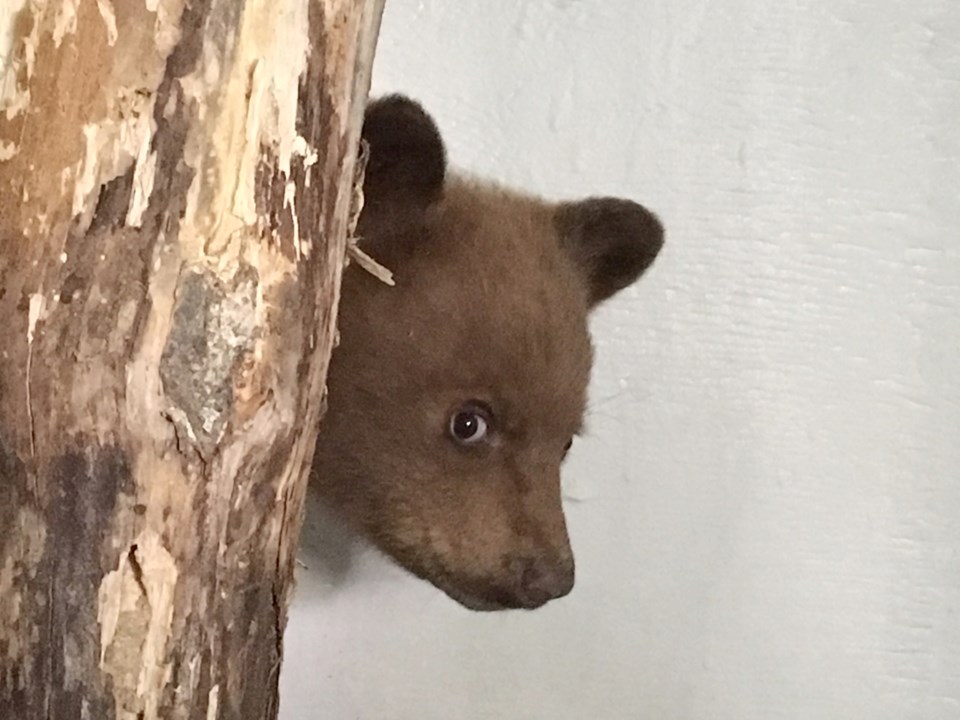Two black bears were released into remote, forested areas of western Alberta June 20, following a hard-fought, year-long rehabilitation at the Cochrane Ecological Institute (CEI).
“It was a pleasure to have them after such a long time being banned from rehabilitating bears,” said CEI Education Co-ordinator Lisa Dahlseide, who spent several years advocating for the province to lift restrictions imposed in 2010 on the rehabilitation of large wildlife in Alberta.
Charlie and Maskwa arrived at the facility in May and July of 2018, respectively, becoming the first black bears to be successfully rehabilitated in Alberta since the province announced a new policy that April to accommodate the need. According to Rob Simieritsch, regional resource manager with Alberta Environment and Parks, the release marks a big step for bear rehabilitation in the province.
“[These facilities offer animals] a fair chance to get healthy, grow to the appropriate age, to be released and then returned back to the wild,” he said.
Initially, the two bears were bottle-fed and kept in a small enclosure, Simieritsch said, before being moved to one with more space and several natural features. According to an Alberta Environment and Parks statement, black bears are determined to be self-sufficient enough to “reintegrate into their original habitat” by the time they are six months old – however, CEI’s the initial release deadline of October 2018 fell during the fall black bear hunt and the institute felt it would put the young bears at risk.
The bears are now 16 months old and, thanks to CEI’s care, have gained enough weight to be safely reintegrated. Veterinarians from the University of Calgary examined the animals prior to release, which was co-ordinated with the assistance of provincial wildlife biologists and Fish and Wildlife staff.
Still, Dahlseide admitted she was hesitant to proceed. Typically, she said, the best time to release a bear is during hibernation – a springtime release can be more difficult for the animals.
“The second-best time to release them would be this time of year. We were pleased with that,” she said. “But it was a stressful situation, just knowing they were under so much stress they had to be tranquilized and were awake while they were being relocated.”
Part of the added stress the bears experienced, she said, was because they spent a few nights at a Fish and Wildlife facility in Cochrane during their transport, where they were exposed to human contact unlike what they experienced at CEI.
According to the province, the bears will continue to be monitored via radio collars to assess whether they can successfully complete normal tasks, such as foraging for food and properly socializing with other bears. Simieritsch added the agency also wants to ensure the bears are not likely to engage in human-bear conflict.
“Our intent is twofold – to make sure they’re being reintroduced into the wild and to keep tabs on them with regards to their progress, and hopefully making it a smooth transition,” he said. “The second piece, from our perspective, is concerned about human habituation – [making sure] the black bears that are rehabilitated don’t become a problem.”
Dahlseide said she is confident Charlie and Maskwa “are not habituated bears,” and hopes the success of this initial rehabilitation leads to the creation of provincial policy surrounding the rehabilitation of other restricted animals, such as cougars and coyotes.
“We’re also hoping they will lift the ban on and grizzly bear cubs – right now [they] are left to starve to death and die, or they’re killed by Fish and Wildlife,” she said. “We are seeking support to build a grizzly bear closure and we have a plan in place.”




